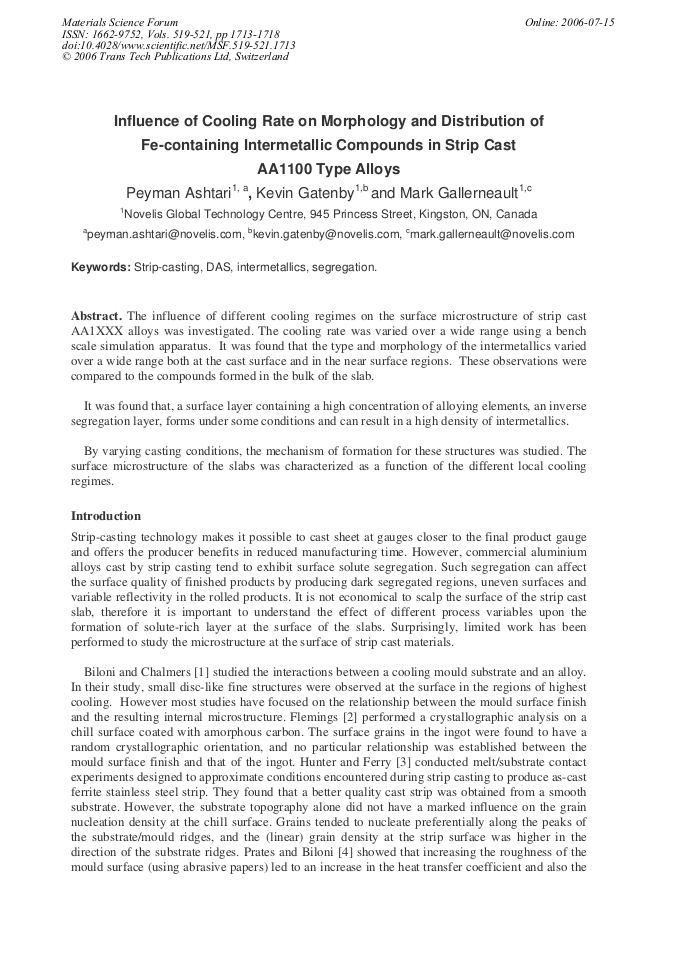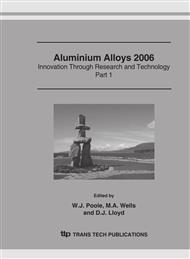p.1687
p.1693
p.1699
p.1707
p.1713
p.1721
p.1727
p.1733
p.1741
Influence of Cooling Rate on Morphology and Distribution of Fe-Containing Intermetallic Compounds in Strip Cast AA1100 Type Alloys
Abstract:
The influence of different cooling regimes on the surface microstructure of strip cast AA1XXX alloys was investigated. The cooling rate was varied over a wide range using a bench scale simulation apparatus. It was found that the type and morphology of the intermetallics varied over a wide range both at the cast surface and in the near surface regions. These observations were compared to the compounds formed in the bulk of the slab. It was found that, a surface layer containing a high concentration of alloying elements, an inverse segregation layer, forms under some conditions and can result in a high density of intermetallics. By varying casting conditions, the mechanism of formation for these structures was studied. The surface microstructure of the slabs was characterized as a function of the different local cooling regimes.
Info:
Periodical:
Pages:
1713-1718
Citation:
Online since:
July 2006
Authors:
Price:
Сopyright:
© 2006 Trans Tech Publications Ltd. All Rights Reserved
Share:
Citation:


